| |  | Become a better cook, then show off your skills. This 12-week series will give you the tools you need to make a meal you're proud to share with friends. | Week 7: The best way to eat your veggies By Jennifer Farley | Growing up, vegetables weren't my thing. At least that's the conclusion I've come to, since I have zero recollection of vegetable consumption when I dig through my early food memories.
I can visualize my grandmother's pistachio cake, steamed crabs at my uncle's house, baking with Mom, dipping everything in ketchup. But there's not a single vegetable in sight – unless you count french fries.
From what I've gathered, steaming was a popular technique for cooking vegetables back then, and I have a feeling that's why I found them entirely unmemorable. Steamed veggies have their place, but they're never going to stand out next to fried potatoes.
Roasted vegetables, on the other hand, are anything but boring. They can actually be similar to fries: crisp and flavorful on the outside, yet tender on the inside. And as a bonus, they can be much more healthful! Did you miss a week? Catch up at Voraciously.com We're seven weeks into our 12-week series, which means it's time to dig into the main components of your dinner party menu. Today, we're tackling the simple technique of roasting, which enhances natural flavors and textures while requiring minimal effort to achieve beautiful, impressive results. You can also coax tremendous flavor out of vegetables through grilling or frying – but roasting is my favorite option when I'm hosting guests for a meal because the process is very hands-off. | <Scroll ahead to see the recipe for Roasted Broccoli With Garlic, Lemon and Slivered Almonds> | A cutting board A chef's knife (typically an 8-inch blade) Fat for coating the vegetables (typically extra-virgin olive oil) A large baking sheet Aluminum foil or parchment paper Salt and pepper Your vegetable of choice | You want the vegetables to be bone-dry when they go into the oven (aside from a coating of oil); that's how you get the best texture and color. Where there's moisture, there's steam, and we're not steaming vegetables here. | Cut your vegetables into approximately 1 1/2-inch pieces. Aim to cut the vegetables to about the same size to ensure even roasting. Otherwise, you may wind up with pieces that are under- or overdone. | Toss the chopped pieces with olive oil. How much oil you use will likely vary based on the type and quantity of vegetables. Porous vegetables such as mushrooms will absorb some of the oil, so you may need a bit more. The veggies should be glistening and evenly coated, but not swimming. |  | Tip: A safe guideline is to start with about 2 tablespoons of extra-virgin olive oil per sheet pan of vegetables. | | | Sprinkle salt and pepper liberally over the vegetables (you can also toss them in with the olive oil). There's no set amount here. "To taste" can be an irritating recipe instruction (it used to drive me nuts), but seasoning is very subjective.
Remember: It's easier to add than to take away.
| Spread the vegetables in a single layer on a baking sheet lined with aluminum foil. Avoid crowding the pan; make sure to leave some breathing room. This will aid in the browning process and help the edges crisp up. Lining the pan with foil (or parchment paper if you prefer) will expedite the cleanup process. | Roast at 425 degrees for 20 to 40 minutes, stirring occasionally, until the vegetables are caramelized and cooked through. Use a spatula to gently stir and turn the vegetables several times during the cooking process (about every 10-15 minutes) to prevent them from becoming too dark on one side. Note: It's entirely possible to overdo it. The more caramelized a vegetable becomes, the more bitter it tastes. Light caramelization creates a subtle sweetness. A hint of bitter is a good thing! It adds dimension. | 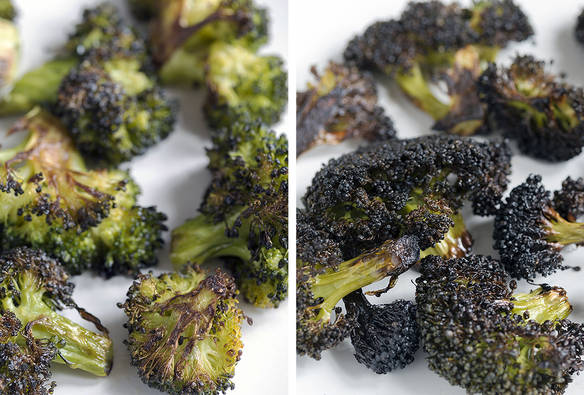 | Times and temperatures will vary a bit depending on the vegetable in question. You'll typically want to roast at between 400 and 450 degrees for 20 to 60 minutes. The length of time will depend of the quantity of vegetables being roasted as well as their density.
You'll know your veggies are ready when they're crispy on the outside and tender on the inside when pierced with a fork.
Here are a few examples of vegetables I love to roast, with suggested cuts, temperatures and approximate times to use as a baseline. - Brussels sprouts: halved, 450 degrees, 30 minutes
- Carrots: peeled or scrubbed well, halved and cut into 3-inch pieces, 425 degrees, 35 minutes
- Small red-skinned or yellow-fleshed potatoes: halved, 425 degrees, 45-60 minutes
- Button mushrooms: quartered, 400 degrees, 20 minutes
Ready to get cooking? Here's one of my favorite recipes. | Roasted Broccoli With Garlic, Lemon and Slivered Almonds 3 to 4 servings | HANDS-ON TIME: 7 minutes
COOK TIME: 30-35 minutes
EQUIPMENT: Rimmed baking sheet, aluminum foil (or parchment paper), chef's knife, cutting board | 3 tablespoons slivered almonds
1 1/2 pounds broccoli (on the stalk)
2 to 3 cloves garlic (peeled), cut into thin slices
3 tablespoons extra-virgin olive oil
1/2 teaspoon kosher salt, or more as needed
1/4 teaspoon freshly ground black pepper, or more as needed
1 lemon, halved |  | Preheat the oven to 325 degrees. Line a baking sheet with aluminum foil. Spread the almonds in a single layer on the baking sheet; toast (middle rack) for about 10 minutes until lightly browned and fragrant, then transfer to a bowl to cool. While the almonds are in the oven, cut the broccoli into small florets. Reserve the stalk for another use, if desired. Increase the oven temperature to 425 degrees. Combine the broccoli florets and garlic (to taste) on the same baking sheet. Drizzle with the oil and toss to coat, then season with the salt and pepper. Taste the broccoli; add salt and/or pepper, as needed. Spread the florets and garlic evenly, leaving some space in between. Roast (middle rack) for 20 to 25 minutes, using a fork or spatula to stir things around halfway through, for even cooking. The garlic should be crisped and lightly browned. The florets should be browned on the edges and tender when pierced with a fork. Squeeze the juice from the lemon halves over the broccoli. Scatter the toasted almonds on top. Serve hot. | Want to kick things up a notch? Garlic, spices, lemon juice and/or zest, grated cheese, fresh herbs and certain condiments (balsamic vinegar, mustard, maple syrup, etc.) are all wonderful additions. Cooked, diced bacon and pancetta also work with many vegetables.
|  | Tip: With the exception of garlic and ground spices, add these ingredients to the vegetables immediately after roasting. Otherwise, they might burn and/or diminish in flavor. | | | We want to see your broccoli! Show us your roasted veggies, no matter how they turned out! Follow us on Instagram at @eatvoraciously, and share your photos of this recipe using #eatvoraciously. In addition to featuring your photo in an upcoming newsletter, we'll be awarding a Team Voraciously T-shirt to one lucky winner who posts a photo of any recipe from the series and includes #eatvoraciously in the caption. Coming up next week: I'll show you how to bake an easy, homemade bread that will have your dinner guests salivating from the moment they walk in the door. Until then, happy roasting! | | | | | |




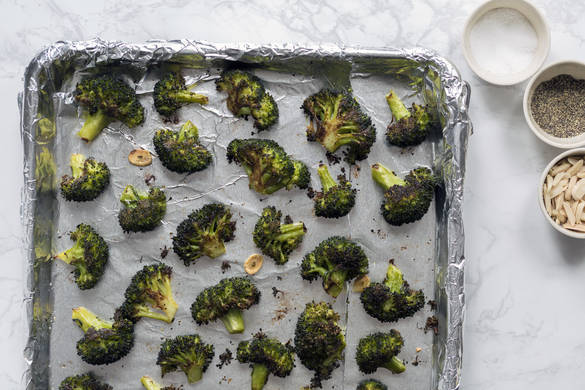
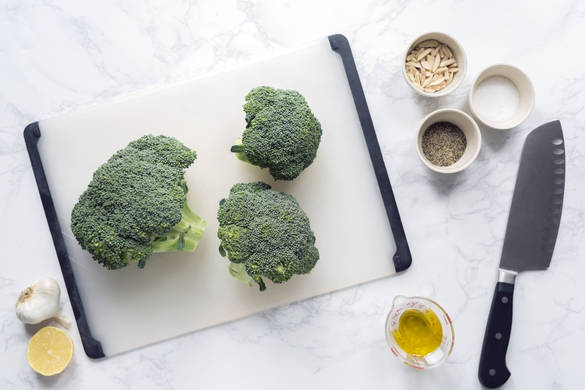

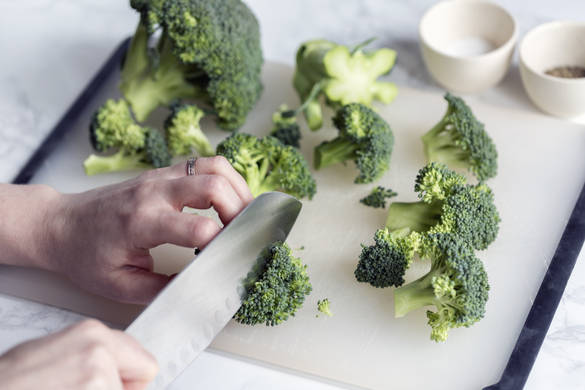

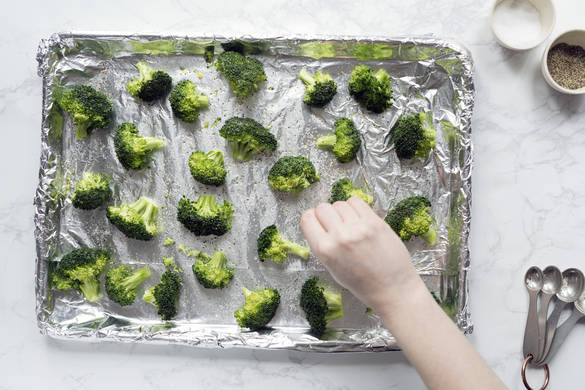

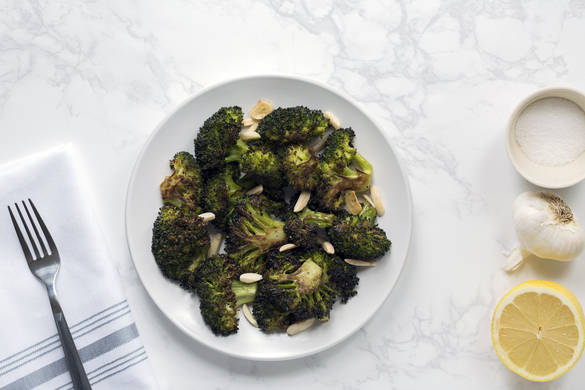





No comments:
Post a Comment